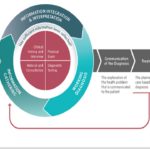An accurate and rapid aHUS Diagnosis is essential to the best of aHUS patients health outcome.
Our expert gave a response to this agenda question:
Is there a diagnosis sweet spot which can be found before a developing thrombotic microangiopathy turns into a catastrophic episode of aHUS?
Diagnosing atypical hemolytic uremic syndrome (aHUS) before it progresses into a catastrophic episode is a key goal in managing the condition. Early diagnosis and intervention can be crucial in preventing severe complications. However, aHUS is a complex condition with varied triggers and underlying genetic factors, and there is no one-size-fits-all “sweet spot” for diagnosis. Here are some important considerations:
- Genetic Testing: Genetic testing can identify individuals with known genetic mutations associated with aHUS, even before the onset of symptoms. Early identification of genetic predisposition allows for proactive monitoring and management.
- Clinical Evaluation: A thorough clinical evaluation by a healthcare provider is essential. Symptoms such as unexplained anemia, low platelet count, and kidney dysfunction should be investigated promptly.
- Recognition of Triggers: Identifying potential triggers, such as infections or certain medications, is important. Recognizing and addressing triggers can help prevent or mitigate the development of aHUS.
- Regular Follow-Up: Individuals with a genetic predisposition to aHUS or a family history of the condition may benefit from regular follow-up with healthcare professionals to monitor their health and intervene if necessary.
- Awareness: Raising awareness among healthcare providers about aHUS and its varied presentations can lead to earlier recognition and diagnosis.
Early diagnosis is challenging, but it is an important goal for improving outcomes in aHUS. Genetic testing and a high index of suspicion in clinical practice can contribute to identifying those at risk and initiating treatment or preventive measures before catastrophic episodes occur. However, aHUS can still present with sudden and severe episodes, making prompt recognition and intervention critical for affected individuals.
While there is no universal “magic number” of days for an aHUS diagnosis, obtaining a diagnosis within 7 days can be beneficial. Early diagnosis allows for quicker initiation of appropriate treatment, which is crucial in managing aHUS and preventing complications. However, individual cases may vary, and the priority is swift and accurate diagnosis to ensure timely intervention. Always consult with healthcare professionals for personalized guidance.
AI has the potential to assist in diagnosing aHUS (atypical hemolytic uremic syndrome) by analyzing medical data, identifying patterns, and aiding healthcare professionals in making faster and more accurate diagnoses. However, it’s important to note that AI should complement, not replace, the expertise of medical professionals in the diagnostic process.
There is little informed data about the quality of the aHUS diagnosis process. The most detailed study undertaken was by the aHUS alliance Global and involved the experiences of over 200 aHUS patients. The results can be seen in four reports published on this website, see below. Global Action found that those diagnosed within 7 days of presentation had the best of health outcomes. Nearly 80% of young patients were diagnosed in that time frame but only around 40% of adults were. Most aHUS patients were misdiagnosed with TTP many for more than 30days and these patients experience the worst of health come.
if there is a sweet spot it is at 7 days from presentation in specialist health care.
The question now is whether the diagnosis process performance can be improved so that no less than 90% of children and adults can be diagnosed within 7 days of presentation. As this article goes to press this research appears in the social media today “A comprehensive model for assessing and classifying patients with thrombotic microangiopathy: the TMA-INSIGHT score” could this be the start of a diagnosis process revolution?

An aHUS diagnosis, lucky or what?
It is hard to believe that it will soon be two years since the aHUS Diagnosis Process project began. It began when a parent of an aHUS patient contacted Global…
Starting article in this series can be found HERE.
Article No. 619

